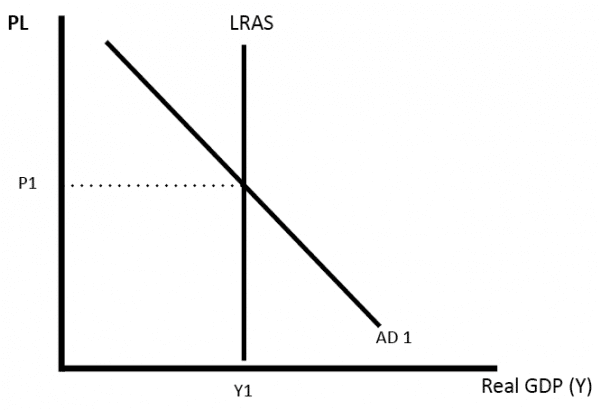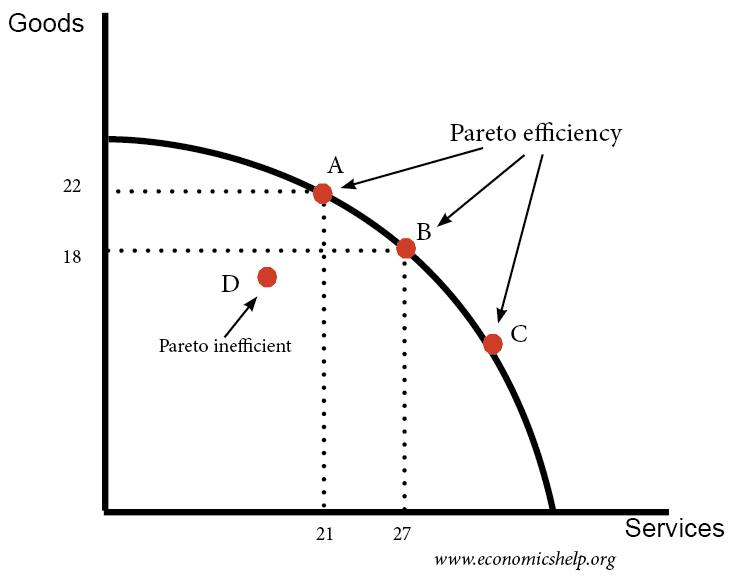AQA Specification focus:
‘The difference between short-run and long-run growth.’
Introduction
Economic growth can occur in both the short run and long run, reflecting different mechanisms of expansion. Understanding these distinctions is crucial for analysing national economic performance.
Defining Economic Growth
Economic Growth: An increase in real national income (adjusted for inflation), usually measured by changes in real Gross Domestic Product (GDP).
Growth can be analysed over different time horizons, with short-run growth driven by changes in demand and utilisation of resources, while long-run growth depends on productive capacity.
Short-Run Economic Growth
Demand-Side Nature
Short-run economic growth refers to an increase in real national output that arises when there is spare capacity in the economy. It occurs when aggregate demand (AD) rises, leading to higher utilisation of existing resources. This does not require an expansion of productive capacity.
Main sources of short-run growth include:
Higher consumer spending due to increased disposable income or confidence.
Greater government expenditure on goods and services.
Increases in investment spending by firms.
Net export growth through stronger foreign demand or favourable exchange rate movements.
Output and Resource Utilisation
Short-run growth implies that previously idle resources such as unemployed labour and unused capital are now being employed. The economy moves closer to its potential output, but the limit remains the existing long-run productive capacity.

The diagram illustrates the AD/AS model, showing short-run economic growth as a movement along the SRAS curve due to increased aggregate demand. In contrast, long-run growth is depicted by a rightward shift of the LRAS curve, indicating an expansion in the economy's productive capacity. Source
Short-Run Economic Growth: An increase in real national output resulting from higher utilisation of current resources, usually driven by increases in aggregate demand.
Long-Run Economic Growth
Supply-Side Foundations
Long-run economic growth occurs when the productive capacity of the economy expands, enabling sustained increases in potential output. It is linked to improvements in the supply-side of the economy rather than demand fluctuations.
Key drivers of long-run growth include:
Increased investment in capital goods, such as machinery and infrastructure.
Growth in the labour force, through demographic changes, immigration, or higher participation rates.
Improvements in labour productivity, driven by education, training, and skill development.
Advances in technology and innovation, raising efficiency and competitiveness.
Structural reforms that enhance institutional quality, property rights, or market flexibility.
The Trend Rate of Growth
Long-run growth is often referred to as the trend rate of growth — the average rate at which the economy can expand without generating inflationary pressure. This trend reflects permanent improvements in efficiency and capacity.
Long-Run Economic Growth: A sustained increase in an economy’s productive capacity, resulting from supply-side improvements such as capital investment, technological progress, and productivity gains.
Long-run economic growth occurs when the productive capacity of the economy is increasing and is a term used to refer to the trend rate of growth of real national output in an economy over time.

The Production Possibility Curve (PPC) illustrates the maximum possible output combinations of two goods that an economy can achieve with its available resources and technology. An outward shift of the PPC represents economic growth, indicating an increase in the economy's productive capacity. Source
Comparing Short-Run and Long-Run Growth
Time Horizon
Short-run growth: Fluctuations over a few years, often tied to the business cycle.
Long-run growth: Structural, permanent changes in the economy over decades.
Role of Aggregate Demand and Aggregate Supply
Short-run growth: Driven by movements in aggregate demand.
Long-run growth: Dependent on shifts in long-run aggregate supply (LRAS).
Impact on Inflation
Short-run growth: If the economy nears capacity, higher AD can cause inflationary pressures.
Long-run growth: Expands capacity, allowing more output without inflation.
Stability
Short-run growth is volatile and influenced by shocks such as financial crises or sudden demand shifts.
Long-run growth is steadier, reflecting deeper structural changes.
Diagrams in Context
Production Possibility Curve (PPC)
Short-run growth: Movement towards the PPC boundary as idle resources are employed.
Long-run growth: Outward shift of the PPC boundary, reflecting expanded productive capacity.
AD/AS Model
Short-run: A movement along the upward-sloping short-run aggregate supply (SRAS) curve due to rising AD.
Long-run: Outward shift of LRAS, showing higher potential output.
Interactions Between Short-Run and Long-Run Growth
Sustained short-run growth can stimulate long-run growth if higher demand encourages investment in new capacity.
Conversely, long-run growth provides the structural foundation for short-run expansions by enabling output without inflation.
Economic policy must balance these dimensions: demand management stabilises short-run fluctuations, while supply-side policies ensure long-term prosperity.
FAQ
Spare capacity allows the economy to expand output without increasing long-run potential. Idle resources such as unemployed workers or underutilised machinery can be activated quickly.
Once the economy reaches full capacity, further increases in aggregate demand will cause inflation rather than higher real output. This highlights the temporary nature of short-run growth compared to the structural improvements driving long-run growth.
Long-run growth is sustainable because it is built on permanent improvements in supply-side factors rather than temporary demand boosts.
Examples include:
Better education and training raising productivity.
New technology that increases efficiency.
Infrastructure investment supporting future production.
Unlike short-run growth, these changes prevent inflationary pressures while supporting continued expansion.
Short-run growth typically reduces cyclical unemployment by increasing demand for goods and services. Firms hire more workers to meet higher demand.
Long-run growth reduces structural and natural unemployment by expanding industries, creating new jobs, and increasing skills through training and innovation. This makes the economy more resilient to future shocks.
Yes, short-run growth can encourage long-run growth if higher demand stimulates business investment.
For example:
Firms facing rising sales may invest in new machinery.
Governments may receive more tax revenue to invest in infrastructure.
Higher confidence encourages research and innovation.
This demand-driven expansion can therefore create the foundation for lasting capacity growth.
The PPC shows growth in terms of maximum possible output, useful for highlighting capacity limits and long-run shifts.
The AD/AS model provides more detail by showing how demand and supply interact in both the short and long run. It can also demonstrate inflationary pressures in the short run, which the PPC cannot.
Together, they give students and policymakers complementary perspectives on economic growth.
Practice Questions
Define the difference between short-run economic growth and long-run economic growth. (2 marks)
1 mark for recognising that short-run growth is an increase in real output using existing capacity (usually driven by aggregate demand).
1 mark for recognising that long-run growth is an increase in the productive capacity of the economy (supply-side improvements, e.g. capital, labour, technology).
Using aggregate demand and aggregate supply analysis, explain how short-run economic growth can differ from long-run economic growth. (6 marks)
1 mark for correctly identifying short-run growth as a movement along the SRAS due to rising AD.
1 mark for correctly identifying long-run growth as an outward shift of LRAS.
1 mark for clear explanation that short-run growth involves better utilisation of existing resources.
1 mark for explanation that long-run growth requires improvements in supply-side factors (capital, productivity, labour, technology).
1 mark for correctly referencing a diagram (AD/AS or PPC) to distinguish between short-run and long-run growth.
1 mark for clear written analysis of how these differences affect the economy (e.g. inflation risk in short run, sustainable output in long run).

